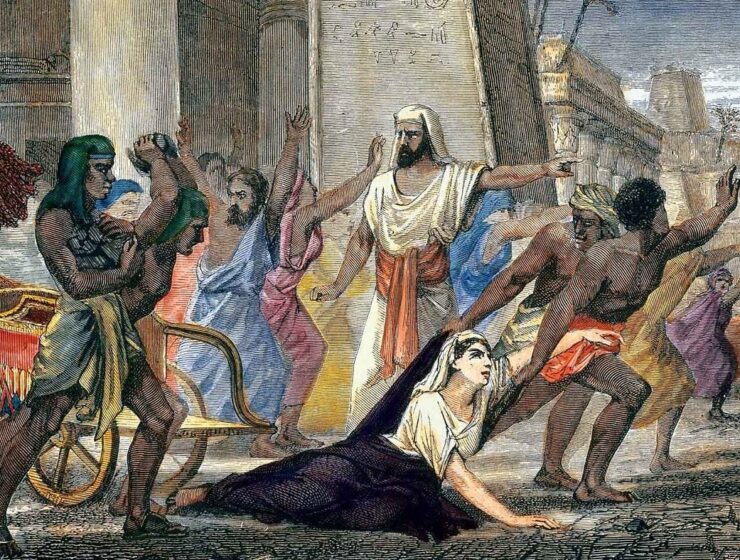He was a Byzantine emperor who reigned briefly in 641 AD following the death of…
Tag: byzantine empire
The oldest known depiction of the Crucifixion of Christ is housed in the Greek Orthodox Holy Monastery of St. Catherine on Mount Sinai. This rare icon blends Greco-Roman art traditions with early Christian iconography, offering a glimpse into the cultural and artistic heritage of the time. Its intricate details and symbolic composition continue to inspire scholars and believers, serving as a living witness to the dawn of Christianity.
In the late 9th century, the Byzantine Empire faced significant challenges in maintaining its influence…
A 1,500-year-old Byzantine cistern next to Hagia Sophia in Istanbul, transformed into a luxurious spa center operated by Navitas Spa Sarnıç within the Hilton hotel, has sparked controversy and legal action. Following complaints, the Turkish Ministry of Culture and local authorities have sealed the business, emphasizing the need for cultural preservation.
Empress Irene of Athens, a pivotal figure in Byzantine history, navigated a world of political intrigue and religious upheaval. From restoring icon veneration to claiming the imperial throne for herself, her reign (797-802) was marked by both piety and ruthlessness. This article explores her complex legacy, examining her impact on the Byzantine Empire and the wider Christian world.
The Empire of Nicaea, ruled by Theodore I, defeated the Seljuk Turks of the Sultanate…
Empress Sophia, wife of Emperor Justin II, was a prominent Byzantine ruler known for her…
He was a Byzantine emperor who reigned from 491 to 518 CE. Born around 430…
In August 1071 AD, the Byzantine Empire suffered a devastating defeat at the hands of…
In 1453, as the ancient walls of Constantinople crumbled under Ottoman cannons, an unexpected chain…
Archaeologists have made a remarkable discovery near the original burial site of Saint Nicholas at the Church of St. Nicholas in Antalya Province, Turkey. This ancient church, rooted in the Greek Byzantine Empire, is at the center of a two-year study uncovering artifacts connected to the legendary figure of Saint Nicholas. Known for his miracles and generosity, Saint Nicholas’s legacy as the inspiration behind Santa Claus continues to captivate the world. Recent excavations have revealed a limestone sarcophagus, potentially marking his original tomb, promising significant insights into historical sources about his final resting place.
Experts may have finally solved a centuries-old mystery surrounding the identity of “Manuel Panselinos,” a renowned Byzantine painter celebrated for blending spirituality with humanity in Orthodox religious art. New research suggests Panselinos was a nickname for Ioannis Astrapas, a 14th-century artist from Thessaloniki. Using forensic handwriting analysis, scholars linked Astrapas’s script in a Paris manuscript to fresco inscriptions in Mount Athos’s Protato Church, long attributed to Panselinos. The findings shed light on a pivotal figure in Byzantine art, whose work harmonized ancient classical techniques with Orthodox traditions.
The Thessaloniki Metro, completed after over two decades, unearthed a hidden city beneath modern streets. Over 300,000 artifacts reveal a captivating glimpse into Thessaloniki’s rich past, from Roman mosaics to a Hellenistic cemetery, transforming the metro project into an unparalleled archaeological journey.
The Hellenic Lyceum of Sydney transported audiences on a captivating journey through 1,000 years of…
A 1,600-year-old bronze amulet depicting King Solomon spearing the devil has been unearthed in Hadrianopolis…
Delve into the rich cultural tapestry of Greece as we explore its UNESCO World Heritage Sites, from the iconic Acropolis in Athens to the breathtaking monasteries of Meteora. Each site offers a unique glimpse into Greece’s storied past and cultural significance. Discover the ancient tales and architectural marvels that make Greece an unmissable destination for history enthusiasts and travelers alike.
The Byzantine Empire, also known as the Eastern Roman Empire, was one of the most…
The Varangian Guard was an elite unit in the Byzantine Empire, renowned for its loyalty…
Archaeologists in Bulgaria have unearthed five gold coins dating to the time of the emperor Justinian the Great (ruled from A.D. 527 to 565). Although it is not unusual to discover coins during excavations, these ones were located on the floor of a 10th-century house — suggesting the dwelling’s medieval occupants may have kept the coins as a kind of heirloom or artifact.
Knowledge can be a wonderful thing, but in the case of the ancient philosopher and…




















